Kyoto’s Hakusa Sonso Hashimoto Kansetsu Garden is a serene oasis that inspired the iconic paintings of renowned artist Hashimoto Kansetsu. Visitors can enjoy the harmonious blend of lush greenery, koi ponds, and meticulously pruned bonsai trees, all while experiencing the centuries-old tradition of the Japanese tea ceremony. Led by a descendant of an ancient samurai clan, the tea ceremony offers a unique opportunity to explore the artistry and spirituality that have long defined this revered cultural practice. With an on-site museum showcasing Kansetsu’s remarkable work, this historic site promises to captivate the senses and leave a lasting impression.
Key Points

- Discover the Hakusa Sonso Hashimoto Kansetsu Garden, a traditional Japanese landscape that inspired the iconic paintings of artist Hashimoto Kansetsu.
- Experience a centuries-old tea ceremony guided by Junko Kakizaki, a descendant of an ancient samurai clan, in the tranquil setting of the garden.
- Learn about the significance and intricate rituals of the Japanese tea ceremony from Junko, who shares her deep knowledge of Japanese culture.
- Explore the exquisite Japanese garden and on-site museum showcasing art and artifacts that celebrate the history and aesthetics of traditional Japan.
- Indulge in a meticulously prepared and beautifully presented kaiseki lunch, savoring the artistry and attention to detail in Japanese cuisine.
Discover Hakusa Sonso Hashimoto Kansetsu Garden
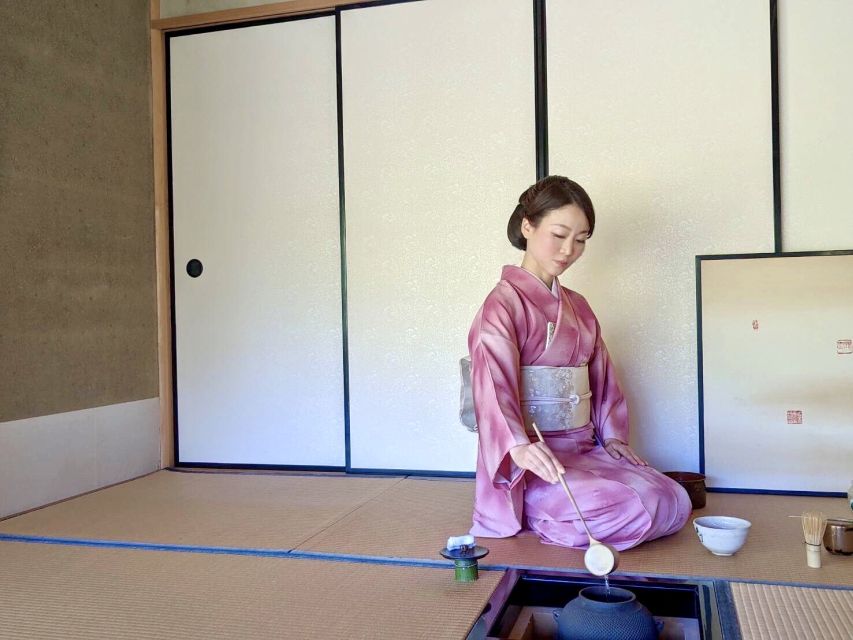
Visitors often discover the serene Hakusa Sonso Hashimoto Kansetsu Garden, a peaceful oasis where they can explore the exquisite grounds and appreciate the artistry of the famous Japanese painter Hashimoto Kansetsu.
The garden features traditional Japanese elements like koi ponds, bridges, and meticulously pruned bonsai trees. Guests can wander through the lush greenery, admiring the natural beauty that inspired Kansetsu’s iconic paintings.
The museum on-site showcases the artist’s remarkable work, providing insight into his creative process and the deep connection between nature and Japanese culture. With its harmonious blend of landscape and art, the Hakusa Sonso Garden offers a truly immersive cultural experience for visitors to Kyoto.
You can also read our reviews of more tours and experiences in Kyoto.
Unveiling the Tea Ceremony Experience

At the heart of the tea ceremony experience lies a centuries-old tradition, where guests are invited to enjoy the serene rituals of preparing and serving matcha, expertly guided by a descendant of an ancient samurai clan, Junko Kakizaki.
Visitors will witness the graceful movements and attention to detail as Junko brews the vibrant green tea, sharing insights into the significance of each step. The ceremony takes place against the stunning backdrop of the Hakusa Sonso Hashimoto Kansetsu Garden, allowing guests to fully appreciate the tranquility of the experience.
With its focus on simplicity, harmony, and respect, the tea ceremony offers a profound connection to Japanese culture that lingers long after the last sip is savored.
Meet the Samurai Clan Descendant
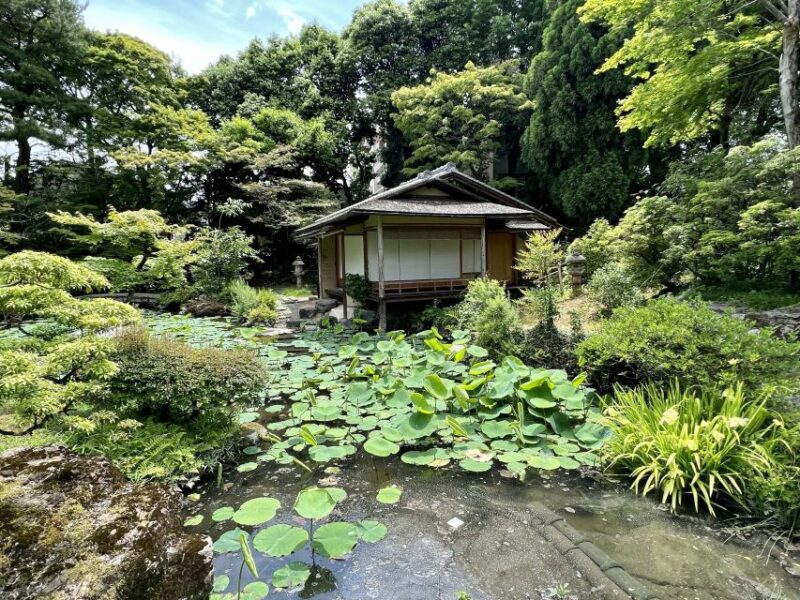
Junko Kakizaki, a descendant of an ancient samurai clan, leads the tea ceremony with a grace that captivates visitors.
Her mastery of the intricate rituals and her deep knowledge of Japanese culture shine through every measured movement as she prepares and serves the matcha tea.
Guests are in awe as they witness the traditional tea-making process, from the meticulous cleaning of the utensils to the precise pouring of the tea.
Kakizaki’s reverence for the ceremony and her ability to convey the significance of each step create a truly immersive and authentic experience.
Through her skilled guidance, visitors gain a profound appreciation for the rich heritage and centuries-old traditions of Japanese tea culture.
Exploring the Japanese Garden and Gallery
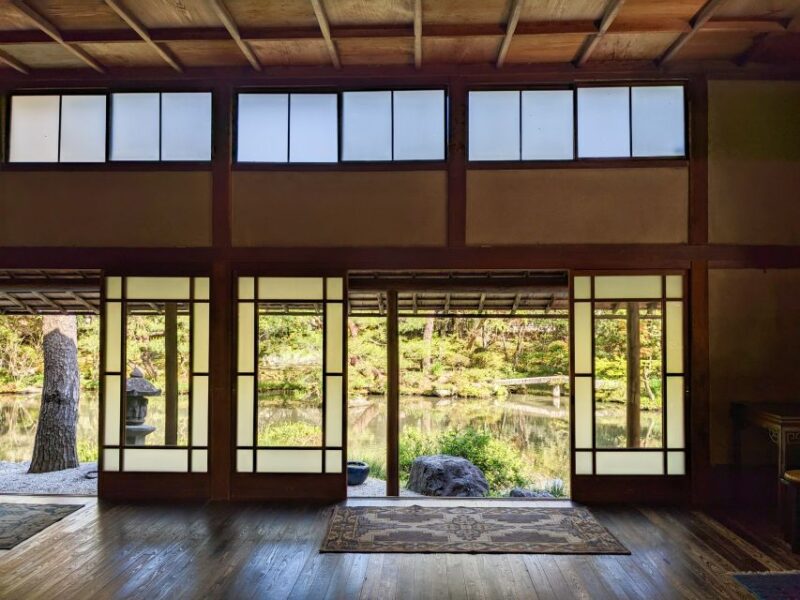
After the captivating tea ceremony, guests can explore the renowned Hakusa Sonso Hashimoto Kansetsu Garden&Museum.
Visitors will discover the artistry and serenity of a traditional Japanese landscape. The carefully curated garden features tranquil ponds, bridges, and meticulously pruned trees and shrubs.
Visitors can wander through the grounds, admiring the expertly designed vistas and the museum’s collection of art and artifacts that showcase the history and culture of Japan.
The experience allows guests to enjoy the beauty and spirituality of this historic site, leaving them with a deeper appreciation for the artistry and craftsmanship that define traditional Japanese aesthetics.
More Great Thing To Do NearbyFeast on Kaiseki Lunch (Optional)
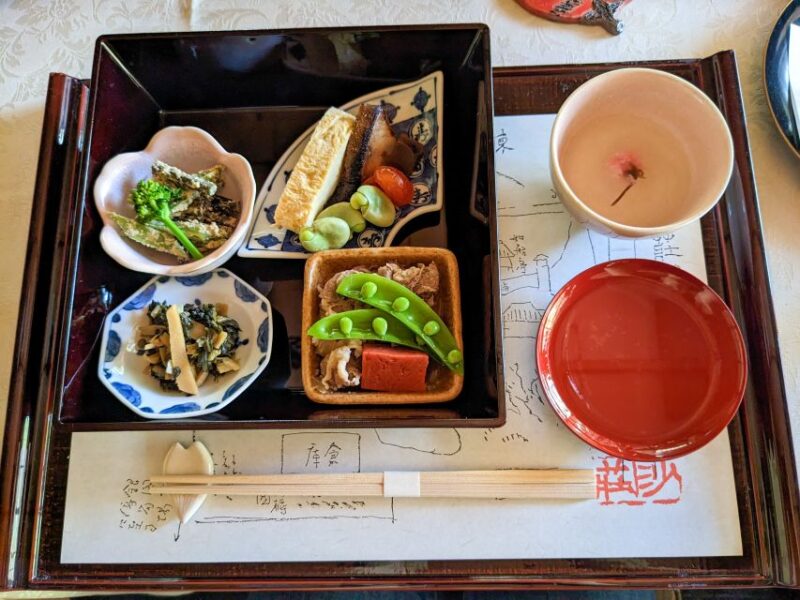
Those who wish to further enjoy the local cuisine can opt for a traditional Kaiseki lunch, which offers a multi-course meal showcasing the seasonal and regional specialties of Japanese cuisine.
The Kaiseki experience is a true culinary journey, featuring:
- Meticulously prepared and beautifully presented dishes
- Fresh, locally sourced ingredients highlighting the season
- A harmonious balance of flavors, textures, and colors
- A chance to savor the artistry and attention to detail in Japanese cuisine
This optional add-on to the tea ceremony and garden exploration provides a well-rounded cultural experience, allowing participants to indulge in the depth and complexity of Japanese culinary traditions.
Advance reservation is recommended to secure this exclusive dining opportunity.
Preparing for the Tea Ceremony
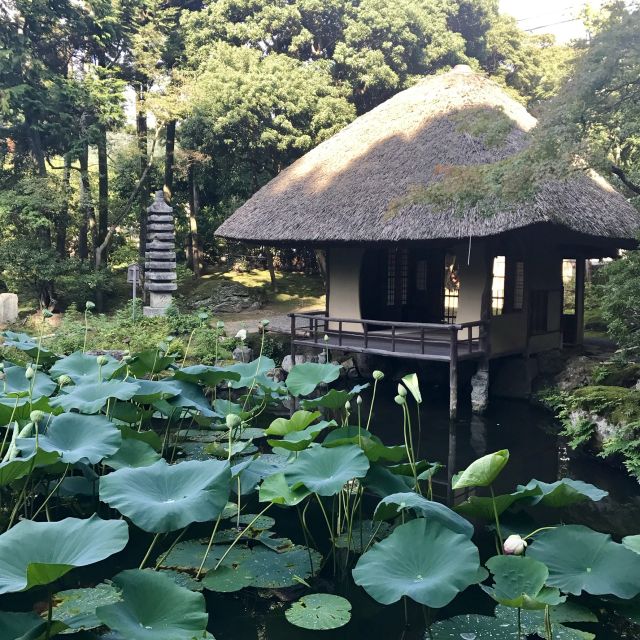
Participants arrive at the tranquil Hakusa Sonso Hashimoto Kansetsu Garden&Museum, where they’re greeted by their tea ceremony host, Junko Kakizaki, a descendant of an ancient samurai clan. As the group settles in, Junko explains the significance of the cultural tradition they’re about to experience. She guides them through the proper etiquette, from removing watches and jewelry to sitting on the floor in a formal Japanese-style position.
| Step | Action | Significance |
|---|---|---|
| 1 | Cleanse hands and mouth | Purification before the ceremony |
| 2 | Admire the tea utensils | Appreciate the craftsmanship |
| 3 | Receive the tea bowl | Accepting the host’s hospitality |
| 4 | Rotate the tea bowl | Examine the design before drinking |
The group follows Junko’s lead, seeing the time-honored ritual.
Appreciating the Stunning Garden Views
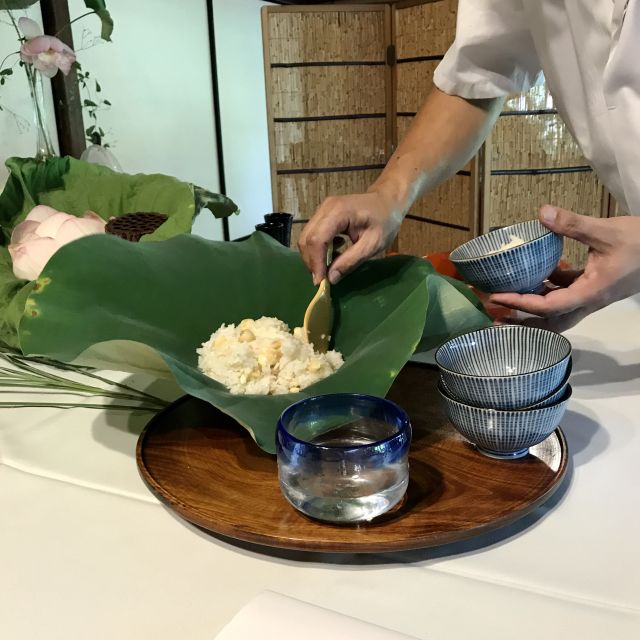
Typically, as the tea ceremony unfolds, the participants find themselves captivated by the breathtaking vistas of the Japanese garden surrounding them. The meticulously manicured landscape, with its serene ponds, carefully pruned trees, and artfully placed stone arrangements, provides a stunning backdrop to the tranquil ritual they’re experiencing.
The garden’s design elements evoke a sense of harmony and balance, inviting visitors to:
- Admire the delicate cherry blossoms or vibrant autumn foliage
- Discover hidden pathways and secluded meditation spots
- Appreciate the interplay of light, shadow, and reflection
- Connect with the timeless beauty of Japanese aesthetics
This harmonious blend of nature and culture enhances the tea ceremony experience, allowing participants to fully enjoy the traditions of Kyoto.
Important Tips and Considerations
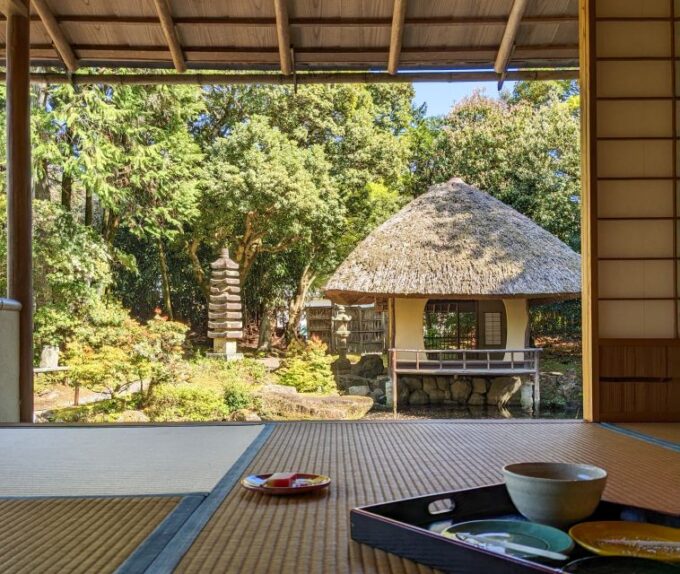
When participating in the tea ceremony, visitors should be mindful of a few important tips and considerations to fully appreciate the experience. Firstly, the minimum age requirement is 12 years old, and the activity operates rain or shine.
Guests should inform the organizers of any dietary restrictions or preferences, as a traditional Japanese-style lunch can be provided. Formal Japanese-style sitting may not be required during the ceremony, but visitors are expected to remove watches, jewelry, and wear socks instead of walking around barefoot.
These considerations help maintain the reverence and authenticity of the cultural experience. By being respectful of the traditions, guests can fully enjoy the beauty of the Japanese tea ceremony and garden.
Frequently Asked Questions
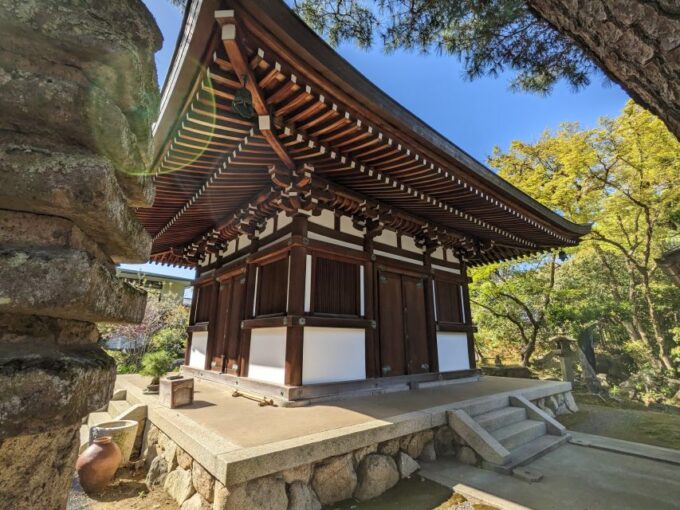
Can I Take Photos During the Tea Ceremony?
You can’t take photos during the tea ceremony. Photography is generally prohibited to preserve the serene atmosphere and allow participants to fully enjoy the traditional experience.
How Long Does the Tea Ceremony Typically Last?
The tea ceremony typically lasts around 45 minutes to 1 hour. Participants will experience the full traditional ritual, including the preparation, serving, and enjoyment of the matcha tea in a serene Japanese garden setting.
Is There an Option to Extend the Tour Duration?
While the activity is typically 1 hour, there may be an option to extend the duration. Participants should inquire about extending the tour when making their reservation to see if this is possible.
Can the Tea Ceremony Be Done in Other Languages?
The tea ceremony can be conducted in English or Japanese, providing accessibility for international visitors. The experience is adaptable to accommodate various language preferences among the limited group of 5 participants.
Is There a Dress Code for the Tea Ceremony?
There’s no strict dress code for the tea ceremony. Participants can wear comfortable, casual clothing. However, it’s best to avoid overly casual or revealing attire out of respect for the traditional cultural experience.
Recap
Immerse in the serene Hakusa Sonso Hashimoto Kansetsu Garden, where centuries-old tradition and artistic expression intertwine.
Witness the captivating tea ceremony, guided by a samurai clan descendant, and explore the on-site gallery showcasing the artist’s remarkable work.
This historic site offers a harmonious blend of lush greenery, koi ponds, and meticulously pruned bonsai trees, providing a truly unique and spiritually enriching experience.
You can check if your dates are available here:More Tour Reviews in Kyoto
- The Art of Geisha: Exclusive Show & Traditional Japanese Game
- Tea Ceremony With Kimono and Professional Photoshoot in Kyoto
- Kyoto Arashiyama Bamboo Forest Hidden Hiking Tour
- Kyoto Early Morning Walking Tour: Nature & History
- Small-Group Dinner Experience in Kyoto With Maiko and Geisha
- Private Kyoto Night Tour: Historic Walk at Gion and Fushimi
Not for you? Here's more things to do in Kyoto we have recnetly reviewed
- 5 Best Cruises And Boat Tours In Kyoto
- 14 Best Dining Experiences In Kyoto
- 20 Best Full-Day Tours In Kyoto
- 5 Best 2 Day Tours In Kyoto
- 2 Best 4 Day Tours In Kyoto
- 20 Best Photography Experiences In Kyoto
- 13 Best Dinner Tours In Kyoto
- 25 Best Food Tours In Kyoto
- 14 Best Lunch Experiences In Kyoto
- Kyoto Bus Tour: Iconic KInkakuji, Ginkakuji, Kiyomizu Temple (AW)
- Kyoto Bus Tour: Arashiyama, Kinkaku-ji Review
- Gyoza Cooking Class in Kyoto: Traditional Japanese Dumplings
